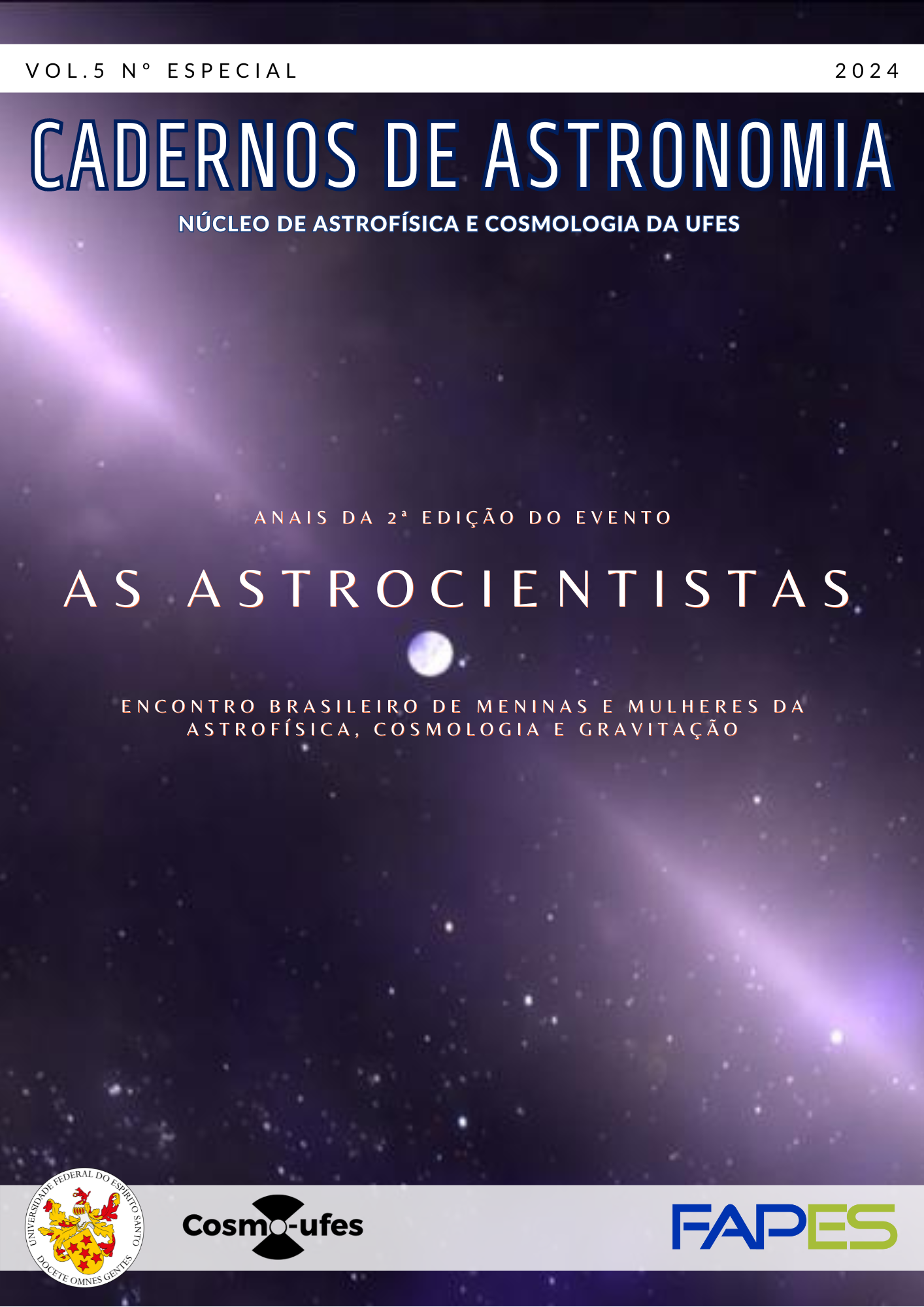Spectroscopic determination of velocity dispersion lens galaxies and their impact on the measurement of the post-Newtonian parameter
DOI:
https://doi.org/10.47456/Cad.Astro.v5nEspecial.44957Keywords:
Cosmology, lensing, velocity dispersion, test of gravityAbstract
This study is dedicated to making precise measurements of the velocity dispersion of lens galaxies, using data obtained by the SOuthern Astrophysical Research (SOAR) telescope during the year 2022. From the analysis of 10 galaxy spectra, we obtained fundamental estimates of their velocity dispersions. speed. This work provides crucial measurements that will be used in collaboration with researchers at the Brazilian Center for Physical Research to infer the post-Newtonian parameter γ. This partnership aims to improve the accuracy of future estimates of this parameter, significantly contributing to the understanding of the fundamental laws of gravity on galactic scales through the mass comparison method, by comparing the dynamic mass of galactic gravitational lenses, independent of γ , with the mass obtained through lens modeling, which depends on γ.
Downloads
References
A. Einstein, Physics and Reality, Journal of the Franklin Institute 221, 349 (1936). DOI: https://doi.org/10.1016/S0016-0032(36)91047-5
L. J. King et al., A complete infrared Einstein ring in the gravitational lens system B1938+666., Monthly Notices of the Royal Astronomical Society 295, L41 (1998). DOI: https://doi.org/10.1046/j.1365-8711.1998.295241.x
J. Schwab, A. S. Bolton e S. A. Rappaport,
Galaxy-scale strong lensing tests of gravity and geometric cosmology: Constraints and syste- matic limitations, The Astronomical Journal 708, 750 (2010). DOI: https://doi.org/10.1088/0004-637X/708/1/750
Abdurro’uf et al., The Seventeenth Data Rele- ase of the Sloan Digital Sky Surveys: Complete Release of MaNGA, MaStar, and APOGEE-2 Data, The Astrophysical Journal Supplement 259(2), 35 (2022).
J. C. Clemens, J. A. Crain e R. Anderson, The Goodman spectrograph, Proceedings SPIE 5492, 331 (2004). DOI: https://doi.org/10.1117/12.550069
H. Aihara et al., Third data release of the Hyper Suprime-Cam Subaru Strategic Program, Publications of the Astronomical Society of Japan 74, 247 (2022).
Dark Energy Survey Collaboration et al., The Dark Energy Survey: more than dark energy - an overview, Monthly Notices of the Royal Astronomical Society 460, 1270 (2016). DOI: https://doi.org/10.1093/mnras/stw641
D. Tody, IRAF in the Nineties, in Astronomical Data Analysis Software and Systems II, editado por R. J. Hanisch, R. J. V. Brissenden e J. Barnes (1993), vol. 52 de Astronomical Society of the Pacific Conference Series, 173.
P. G. van Dokkum, Cosmic-ray rejection by Laplacian edge detection, Publications of the Astronomical Society of the Pacific 113, 1420 (2001). DOI: https://doi.org/10.1086/323894
M. Cappellari, Improving the full spectrum fitting method: accurate convolution with Gauss-Hermite functions, Monthly Notices of the Royal Astronomical Society 466, 798 (2017). DOI: https://doi.org/10.1093/mnras/stw3020
A. Vazdekis et al., UV-extended E-MILES stellar population models: young components in massive early-type galaxies, Monthly Notices of the Royal Astronomical Society 463, 3409 (2016). DOI: https://doi.org/10.1093/mnras/stw2231
Downloads
Published
How to Cite
Issue
Section
License
Copyright (c) 2024 Ingrid Beloto, Eduardo Cypriano, Martin Makler

This work is licensed under a Creative Commons Attribution 4.0 International License.






